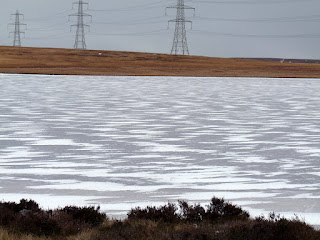We've read :
'Churchill’s Wizards' by Nicholas Rankin, published by Faber and Faber, paperback 2009
As the blurb says ‘This is the story of how the British really won two world wars – by conning the Kaiser, hoaxing Hitler and using brains to outwit brawn’. It covers the development of camouflage and the technique of sticking a dummy’s head over a parapet to lure hidden snipers in world war 1, right through to the deceptions (including inventing an entire army to mislead the Germans) which preceded D day towards the end of World War 2. It is full of anecdotes and character sketches and uncovers stories which remained secret for decades.
Above all, it turned out to be a really good read. If you read these stories in a novel, you would say it was not true to life.
Pat read it. Alan started it.
'Ross Poldark' by Winston Graham, published by Pan 2008 (originally published 1945)
Ross Poldark returns to Cornwall from America in 1783 to find his father dead, his estate impoverished, and his girl engaged to his cousin. This is the first novel in a series of twelve and traces the first four years of a saga which continues to 1820. The depiction of Georgian Cornwall gives a good view of what real life must have been like and the characters are well drawn. Winston Graham has an understated writing style which makes the story even better.It was televised in the ‘70s and was very popular in several countries, including the US.It was good enough that we have bought the next two books already, having lost/lent the series somewhere along the line.
Alan re-read it.
'On Basilisk Station' by David Weber, published by Baen Books 1993
This is the first in a series, known to aficionados as ‘The Honorverse’ after the heroine Honor Harrington. If you like your Science Fiction as a rip-roaring space opera, galactic in scale and with a strong heroine, this is for you. David Weber makes no bones about the fact that the series, is to some extent, a tribute to C.S. Forester – Horatio Hornblower in Space.
As this is the first of the series, Weber has to spend some time explaining how the FTL technology works in his universe but he does remain consistent throughout the series and it is easy to follow, if you suspend disbelief – and you wouldn’t like Science Fiction if you couldn’t do that.
I have to warn you that, as the series progresses, Weber has no hesitation in killing off some of his more likeable characters and not all the books end on a happy note. The books are best read in sequence and I strongly recommend that you start with this one.
If I were to say anything negative about the series, it is that there are too many explanations particularly of spaceship combat. It makes for dull moments with lots of numbers. On the other hand, his accounts do give a sense of the sheer distances in space.
The best place to find all about the series is at Baen Books, which publisher I highly recommend for contemporary Science Fiction. You will find the first two books in the series for download in a range of e-book formats in the Free Library. Yes I said FREE.
Pat re-read it.
'The Eagle of the Ninth' by Rosemary Sutcliff, published by Oxford University Press, paperback 2004 (first published 1954)
Somewhere around A.D. 117, the Ninth Legion (Legio IX Hispana) marched north into Scotland and (so legend has it) were never seen again. Nearly 1800 years later, a wingless Roman Eagle was dug up at Silchester.
Rosemary Sutcliff wove the two stories together by telling the tale from the perspective of a young Roman Centurion Marcus Aquila and his attempt, 20 years on, to discover the fate of his father’s legion in Scotland and recover its standard.
Although it was written over 50 years ago, it stands the test of time and the geography can be traced through the Roman place names. As for the history – well, 50 years on, we know that there are records of the Ninth Legion later than 117 and it is thought it met its destruction in the East of the Roman Empire. The museum housing the Silchester eagle states that it "is not a legionary eagle but has been immortalized as such by Rosemary Sutcliff.” She also assumed that the legion's title of "Hispana" meant that it was raised in modern Spain, but the title was probably awarded for victories there.
You will hear more of this tale in 2010 as no less than two films are being released based on the story of the Roman Army which crossed the border in a campaign against the Picts and the legend that they never returned.
One is ‘The Centurian’, which had the working title of ‘The Ninth Legion’. This is directed by Neil Marshall who says it isa straight-up action thriller which just happens to be set in the 2nd century AD.
The second film is directed by Kevin McDonald and is called ‘The Eagle of the Ninth’. It is supposedly ‘based on’ Rosemary Sutcliff’s book – we shall see.
Both films did some filming in Scotland so the Ninth Legion returned twice in a year after a gap of nearly 1900 years. Not bad for a book that was intended for children.
We both re-read it.
We've also enjoyed this reproduction of an 1844 Panorama of London.
















